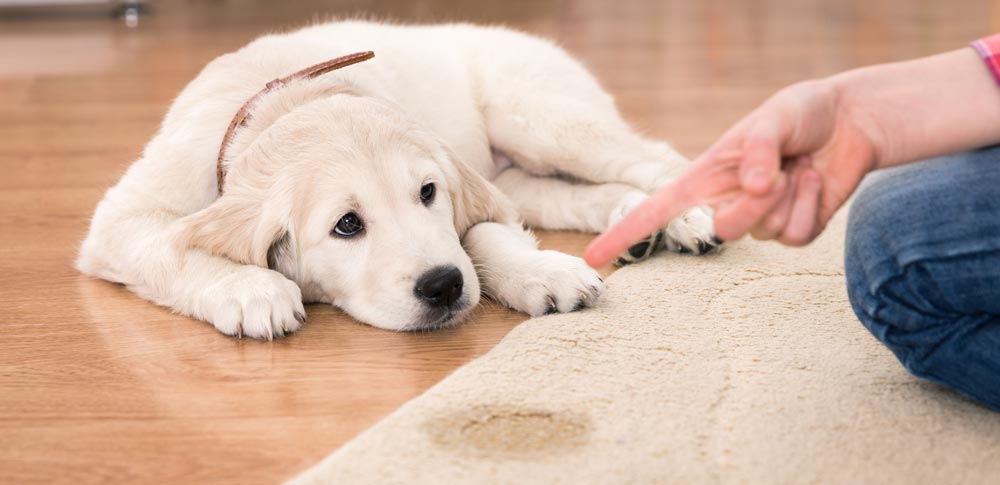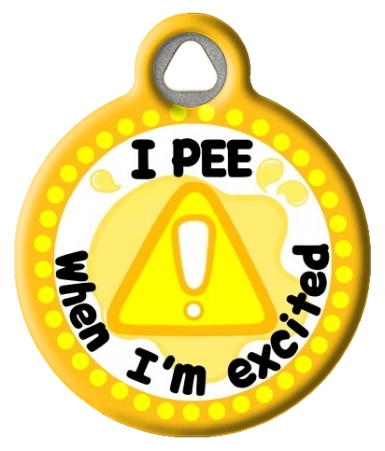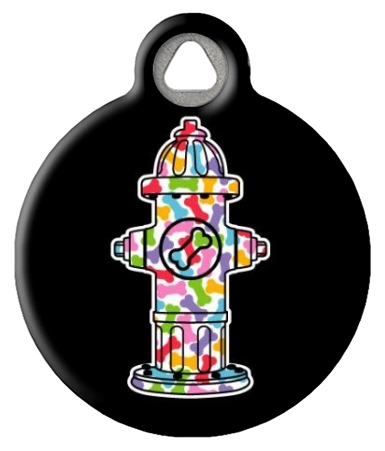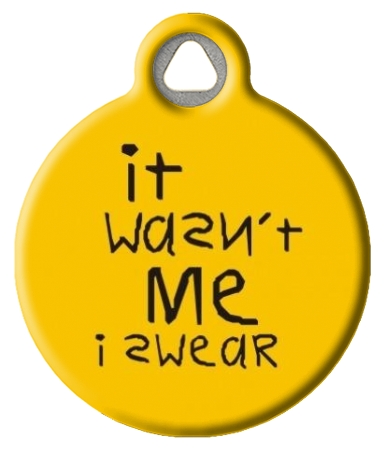Submissive urination can be frustrating and annoying. Punishment only makes the problem worse and it may seem like there is no possible solution to the problem. Fortunately, by gaining an understanding of the causes of submissive urination, you can learn to train your pet out of this unsavory habit.
What Causes Submissive Urination?

Submissive urination is a dog's instinctive response to the presence of another being who they consider to be intimidating, superior or even dangerous. Since it is an instinctive response, your dog cannot control the reaction. It is not the same as a housebreaking problem. Submissive urination can occur as a result of specific actions, such as putting on a leash or collar, or as a result of the signals we send through body language or voice tones. Feelings of fear, nervousness, confusion and sensitivity can all trigger this submissive gesture. All of this means that much of the solution will come from training that builds confidence and eliminates fear.
How to Overcome Submissive Urination

The following 10 tips will help you to minimize or even eliminate your dog's submissive urination problem:
1. Never punish your dog for his submissive urination - it will make the problem worse by causing your pet to feel even more fear and anxiety.
2. In case of submissive urination, control your reaction. Do not reassure or reinforce this kind of behavior. Instead, stay calm and quiet. Immediately take your dog outside to relieve himself and clean up the mess when he is not watching.
3. Build up your pet's confidence around other people and animals gradually. Don't rush or force the matter. Confidence building will take time.
4. Practice obedience training with a positive attitude. Make sure your dog has enjoys each training session, as this will help build his confidence.
5. Take your dog outside to urinate frequently. This will prevent pressure from building up in his bladder, which will help him control his bladder better - even in stressful situations.
6. Spend time sitting by your dog's side while he wears a leash. This will build trust and confidence.
7. Ask friends not to touch or look at your dog when they first arrive to your home. Interaction may be advisable, but only after your dog has calmed down and gotten used to their presence.
8. If you crate your dog, keep the crate close to the door, so they can make a quick dash outside to go. In addition, when you get home, allow your dog a few minutes to calm down before you let him out of his crate.
9. When walking your dog, give him a command to urinate and then praise him in a calm, level voice when he does so.
10. Work at making your body language non-threatening. This means staying calm and unconcerned and keeping voice levels low.
Put these 10 tips into practice today to help your dog build confidence and minimize submissive urination.








